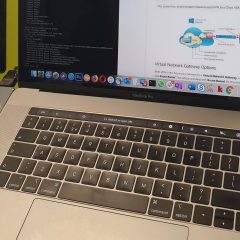Cisco ASA Remote Management via VPN
ASA Remote Management KB ID 0000984 Problem It’s been ages since I has to do this, I usually just manage firewalls via SSH from outside. But I was out on a client site last week and needed to connect to to my ASA, so I simply connected in via AnyConnect; Note: The same procedure is applicable if you are an IPSEC VPN client, L2TP VPN client, or simply coming in over a site to site VPN link. And attempted to SSH, no joy, I tried...
Windows In VMware Fusion ‘Cannot Access Shared Folders’
KB ID 0001627 Problem Every so often I have a problem with the Windows 10 VM that I run on my mac in VMware Fusion, last time I needed to upgrade to Fusion 11.5, before that it was a registry fix. This time I could not access any files or folders on the parent mac. Network Error Windows cannot access \\vmware-host\Shared Folders\{Folder-Name} You do not have permissions to access \\vmware-host\Shared Folders\{Folder-Name}. Contact...
Cannot Access / Open ASDM
KB ID 0000458 Problem Out of the box Cisco PIX/ASA devices should have a working ASDM. This config can get broken over time, and also there are a few things that can trip you up on your client machine. Solution Make sure the client machine you are using is not the problem 1. The ASDM runs using Java make sure the machine has Java installed. Note: If you are using Java version 7 Update 51 see the following article. Unable to Access...
Safari: This connection Is Not Private Loop
KB ID 0001462 Problem This has been bugging me for a while, I use Safari for most things, but recently going to an https (SSL secured) web page that uses a self signed, or expired certificate, give me this; Now this is to be expected, normally you click ‘visit this website’ it asks for you password, and away you go. However now it doesn’t, it loops you back here again and you can go round many times, until you give...
SquirrelMail – Error connecting to IMAP server 13 : Permission Denied
KB ID 0000880 Problem After installing SquirrelMail (with Postfix and Dovecot). When I attempted to connect via a browser, this is what happened. Solution Nice easy fix, 1. Connect via SSH (or open a temrinal window) > Logon as, or su to root. 2. Execute the following command; setsebool -P http_can_network_connect=1 Related Articles, References, Credits, or External Links...




